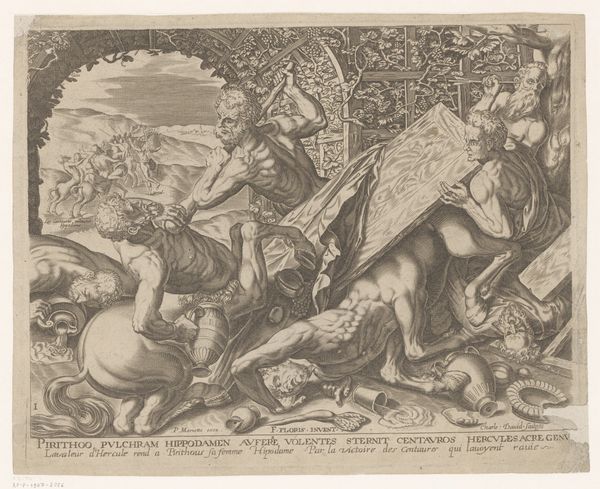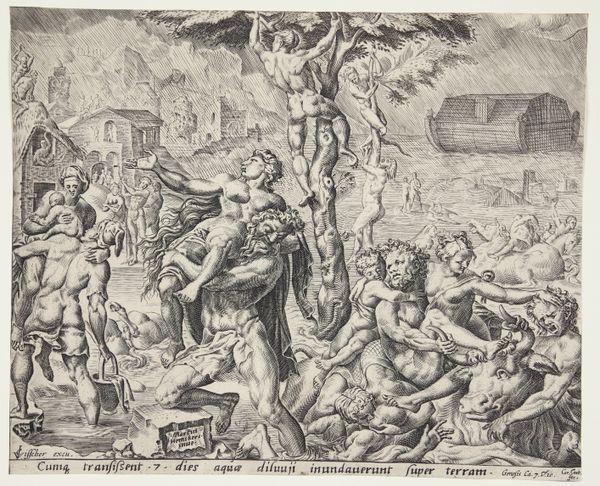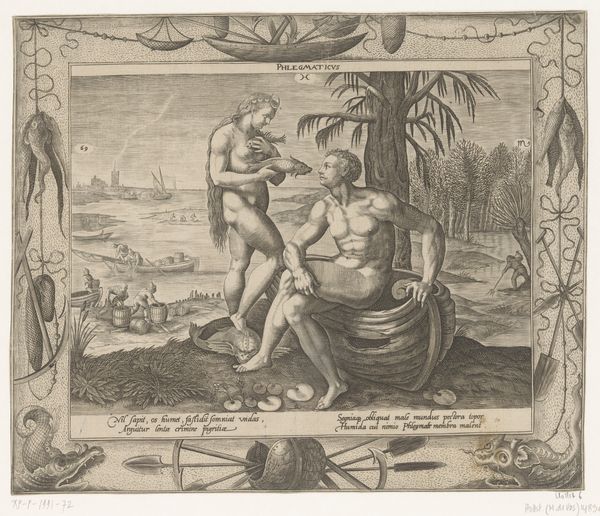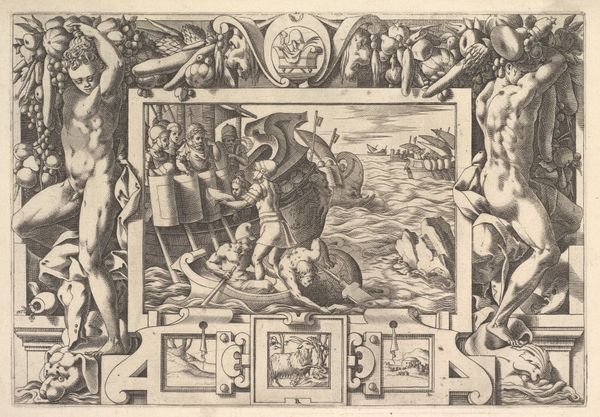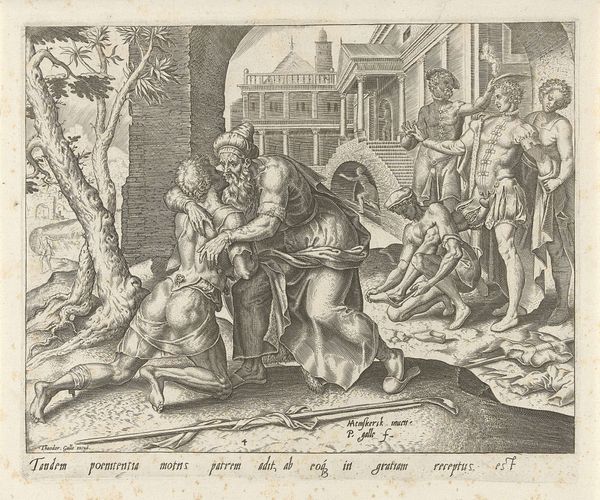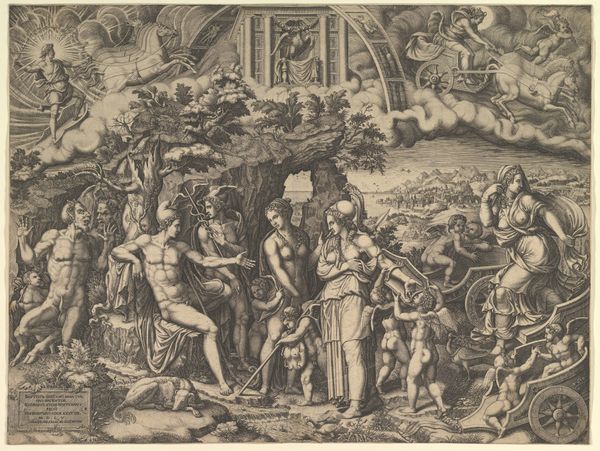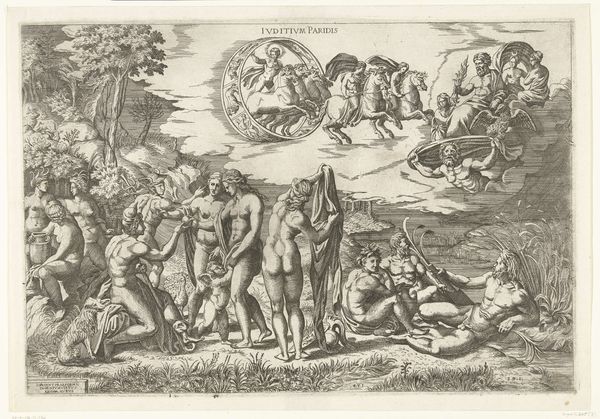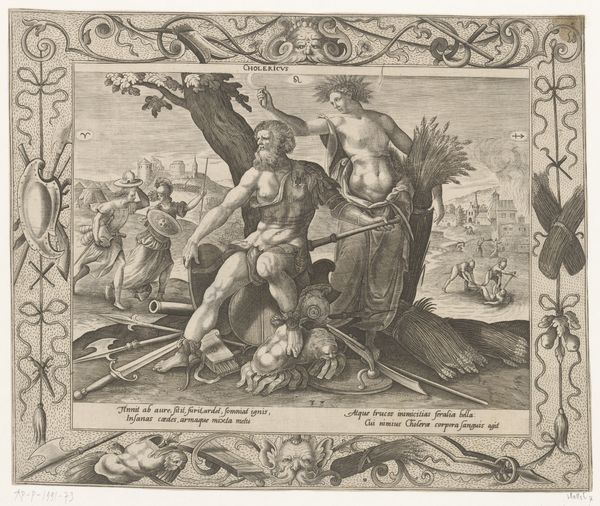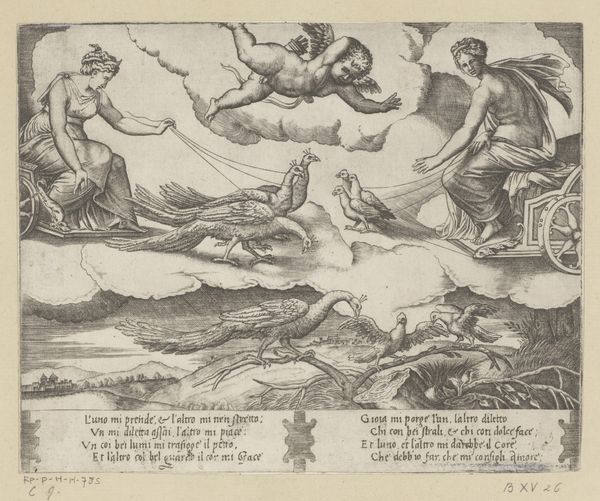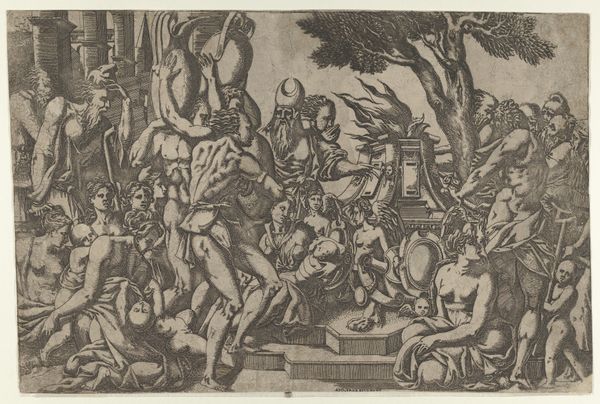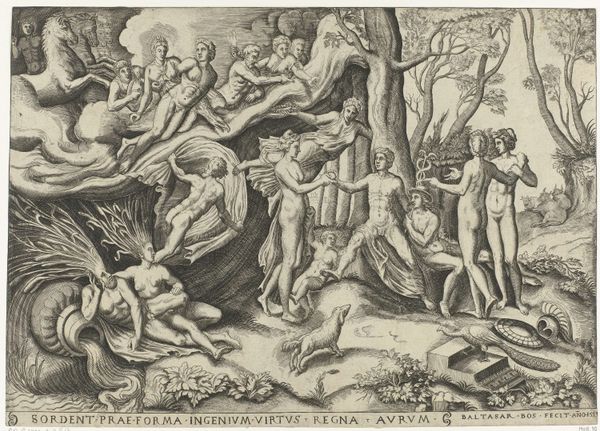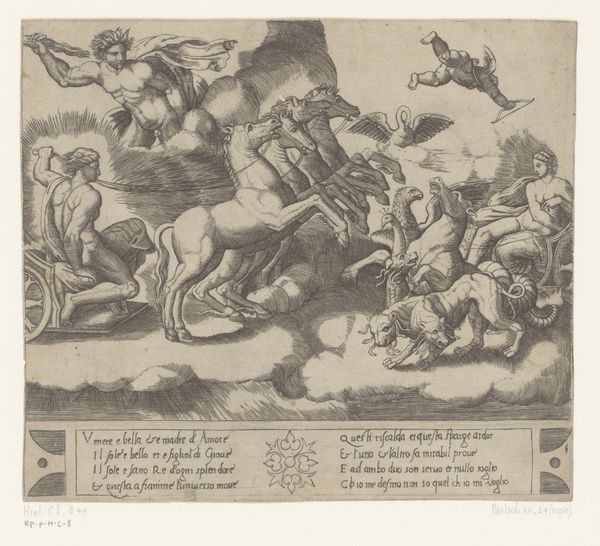
print, engraving
#
portrait
#
allegory
#
baroque
#
pen drawing
# print
#
figuration
#
form
#
line
#
history-painting
#
nude
#
engraving
Dimensions: height 246 mm, width 294 mm
Copyright: Rijks Museum: Open Domain
Curator: This print, dating from around 1600 to 1615, is titled "Melancholie," made by Hieronymus Lederer. Editor: The composition strikes me immediately. It’s dense, crowded even, with symbolic objects, and two figures that seem utterly isolated in their own internal worlds. Curator: Indeed, the materiality here is important. As an engraving, the line work is the defining characteristic, and its clarity allows for an incredible density of detail, communicating symbolic layers on several levels. Notice the ruined objects in the foreground. It speaks volumes about decay and disillusionment. Editor: Absolutely. Visually, the repetition of circular forms creates an overwhelming feeling—from the broken pottery to the woman's gesture, they convey both enclosure and hopelessness. Even the figures are positioned to emphasize lines that close in on themselves. Curator: Consider the social context. This print was made during a period of significant intellectual ferment but also, increasing social stratification. So this portrayal of "Melancholie" can be understood as a critique of that era, demonstrating an exhaustion with knowledge. Note also how this was disseminated—through the reproducible nature of the print, widely distributed, making ideas accessible but also potentially commodifiable. Editor: Right, this accessibility allowed the visual language to solidify certain cultural meanings associated with melancholia. The contrast between light and shadow gives an almost theatrical staging to human sorrow, underscoring a state of interiority. It highlights psychological space, really. Curator: Thinking about reception then—this wasn’t merely passively viewed, it became enmeshed in a network of social meanings. Printmaking was not just about producing images; it involved distribution networks, workshops, and apprenticeship systems. Its consumption shaped the way people understood, internalized, and eventually, perhaps, performed this kind of emotional state. Editor: Yes, on purely formal terms, I’m stuck on how that dense linework communicates an oppressive mood. The use of a monochromatic palette enhances the sombre quality that evokes more somber aspects of being. Curator: Analyzing "Melancholie," through materiality opens paths into larger networks. Editor: For me, seeing those aesthetic decisions gives immediate insight into the soul of this symbolic state.
Comments
No comments
Be the first to comment and join the conversation on the ultimate creative platform.
